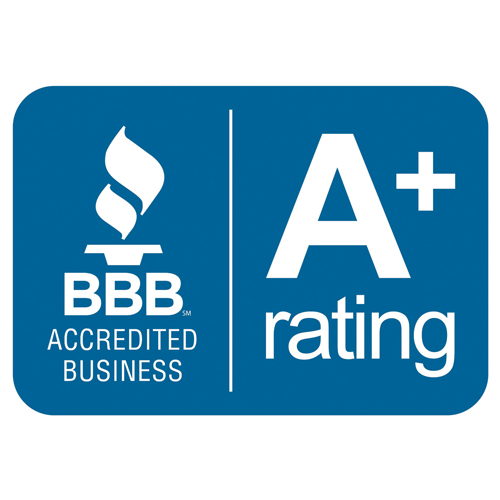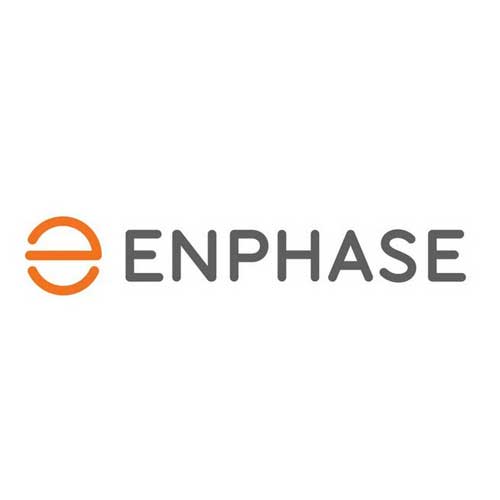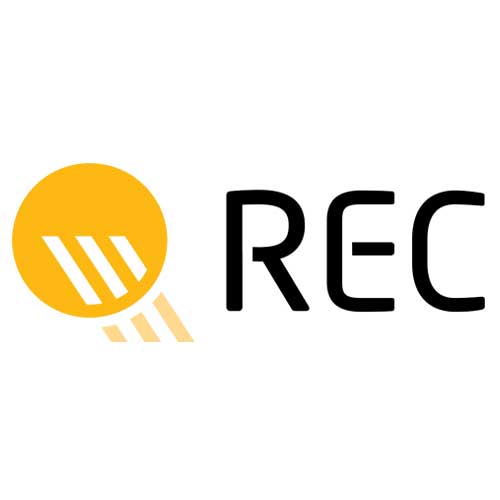How Do I Qualify For Federal Solar Tax Credit?
The federal solar tax credit, also known as the Investment Tax Credit (ITC), is a financial incentive program designed to encourage individuals and businesses to invest in solar energy systems. This tax credit can be used to offset the cost of installing a solar system on your property and can save you thousands of dollars when filing your taxes. By taking advantage of this incentive, you can significantly reduce the amount of money spent on your solar installation while helping to promote renewable energy usage.
The Investment Tax Credit allows homeowners and business owners a dollar-for-dollar reduction on their federal tax liability when they purchase and install a qualifying solar energy system. The maximum credit available is 26% of the cost of the installation with no upper limit. Additionally, the ITC is now available for both residential and commercial properties, so both types of owners are eligible for this significant saving.
To qualify for this federal tax credit, individuals or businesses must purchase and install an eligible photovoltaic (PV) system which includes either photovoltaic modules or thin-film materials that use sunlight as its source of energy. This system must be installed before December 31st of 2021 in order to receive full benefits from the ITC. Additionally, all PV systems must be certified by an accredited independent testing laboratory in order to ensure quality assurance standards are met. Furthermore, all components used within an eligible PV system must meet or exceed industry standards in terms of performance and safety criteria established by regulators.
What Is The Solar Tax Credit And How Does It Work?
The Solar Tax Credit, also known as the Investment Tax Credit (ITC), is a federal tax credit designed to incentivize Americans to make energy-saving investments in solar energy systems. It’s a dollar-for-dollar reduction of the federal income taxes that you owe, and it effectively lowers the cost of going solar by 26 percent. That’s a major chunk of change!
But how does the solar tax credit work? All you have to do is install eligible solar systems on your home or business in order to qualify for the credit. This includes photovoltaic (PV) systems, solar hot water heaters, fuel cells, small wind turbines and geothermal heat pumps. If you are an individual taxpayer or own a small business, you can claim up to 26 percent of the total cost of installing any eligible system against your federal income taxes in 2021.
To receive the full tax credit amount, you must purchase and install your solar energy system by December 31st 2021. For those who buy their system after January 1st 2022, they will only be eligible for a 22 percent tax credit on systems purchased between 2022-2023; then 10 percent thereafter until 2023 when the incentive ends.
Let’s break down what this means in terms of real dollars: For example if you were to spend $25,000 on an eligible system before December 31st 2021 – this would be considered your “qualified expense” – and if you are not subject to an alternative minimum tax (AMT) then you would receive $6,500 back from Uncle Sam come April 15th 2022 when filing taxes.
It gets even better too! You can also use excess credits from this installment toward future years’ taxes – which essentially allows individuals or businesses to spread out their savings over multiple years which could help with budgeting long term. Small businesses and corporations may also be able to take advantage of accelerated depreciation as well as other incentives such as Renewable Energy Grants or Low Interest Financing Programs which could further reduce costs associated with going solar.
But don’t forget that field conditions must be taken into consideration prior to installation such as roof structure/angle/orientation/condition etc., local codes and regulations set forth by local governments must be followed; any and all applicable permits need to be obtained; and most importantly a qualified professional contractor should always do installations (even though some states now allow homeowners DIY installs). Also keep in mind that depending upon where you live property assessment laws may vary which could affect whether or not energy saving investments are added onto home values; so it is important to check with local assessors prior to making any large investments into renewable energy systems just in case there might be some kind of restriction preventing one from taking advantage of certain benefits associated with installing such equipment.
Who Is Eligible For The Federal Solar Tax Credit?
If you’re looking to take advantage of the Federal Solar Tax Credit, now is the time to do it. This credit is available to homeowners that purchase solar panels and install them on their primary residence. The tax credit is based on the cost of the solar panels, and it covers 30% of that cost. In order to qualify, the solar panels must be installed on your home and meet certain requirements.
For example, the solar panels must be mounted on your roof in a place that’s accessible from the ground. They also can’t obstruct your view or sunlight from natural sources like windows or doors. And finally, you may not be able to claim this credit if you own any other property – like a vacation home – which means you’ll need to purchase additional solar panels just for this one residence.
Once you’ve met all of these requirements, file for the tax credit when you file your taxes for the year in which the solar panels were installed. The tax credit is set to expire at the end of 2019, so make sure to take advantage of it while you still can!
Federal Solar Tax Credit For Homeowners
Are you looking to install solar panels on your home or business? If so, you may be interested in the Federal Solar Tax Credit. This credit is available for homeowners and businesses, and it can help to reduce your tax bill by up to 26 percent. Here are a few more details about this exciting program:
First, let’s talk about who qualifies for the Federal Solar Tax Credit. This credit is available for homeowners and businesses who are installing solar systems on their residential (primary) homes or businesses. This includes both existing homes and new construction. There are no income limits or minimum investment requirements, so everyone can take advantage of this incredible tax credit.
Another great thing about the Federal Solar Tax Credit is that it’s available for both leased and purchased systems. So whether you’re buying or leasing your system, you’re covered! Plus, the tax credit will expire at the end of 2021 – giving you plenty of time to make use of it!
So if you’re looking to install solar panels on your home or business, now is the time to do so! The Federal Solar Tax Credit offer great savings on your energy bills – so don’t hesitate any longer!
How Much Is The Federal Solar Tax Credit?
The Federal Solar Tax Credit was established by the Energy Policy Act of 2005 with an initial rate of 10%. This amount has been steadily increased over time until reaching what it is today in 2020. By making use of this tax credit, you can save thousands of dollars when installing solar panels on your property. The exact amount will depend on a few different factors, such as the size and price of your system, where you live, your installation costs, etc.
In order to qualify for the federal solar tax credit, you must own the property where the solar panels are installed. You also need to purchase a new or leased solar energy system that meets all necessary guidelines set by the Internal Revenue Service (IRS). In addition, you must itemize your taxes on IRS Form 1040 in order to be eligible for this tax credit.
The Federal Solar Tax Credit does not require any repayment and allows individuals or businesses to claim up to 26% of their total expenditures made towards installing a solar energy system within one year from completion date. In other words, if you spend $20,000 dollars on a residential or commercial photovoltaic system installation in 2020, you can get back up to $5200 dollars through this credit as long as you meet all necessary requirements for eligibility.
This incentive program not only makes it more affordable for individuals and businesses across the nation but also encourages them to make use of clean energy sources like solar power instead of traditional fossil fuels which cause pollution and damage our environment. Furthermore, due to other factors such as declining battery prices and cheaper equipment costs associated with photovoltaic systems, many people have already taken advantage of this tax relief measure even before 2021 when its rate decreases down slightly from 26%.
When Will The Federal Solar Tax Credit Expire?
It’s that time of year again – the federal solar tax credit is set to expire at the end of 2021. If you’re looking to take advantage of this valuable incentive, now is the time to do so. The tax credit is equal to 30% of the cost of your solar installation, and there are no income restrictions for eligibility. This means that anyone and everyone can take advantage of this valuable incentive.
The tax credit can be used to offset both state and federal taxes, so you’ll not only save money on your energy bills, but you’ll also be getting a financial boost in the form of tax savings. Keep in mind that the tax credit is set to expire at the end of 2021, so don’t wait – get started today and enjoy big savings on your solar installation!
Qualifying For The Federal Solar Tax Credit
Are you interested in using solar power to save money on your energy bills? If so, you may be interested in the Federal Solar Tax Credit. This credit is available to homeowners that purchase solar panels, and it can be used to offset the cost of the panel purchase. You don’t need to be a homeowner or live in a designated solar-friendly state to qualify for this credit – it’s available for both residential and commercial properties.
To qualify for the credit, your solar panel system must be installed by a certified solar installer. This means that the installer must have been trained and approved by the government as being qualified to install solar panels. In addition, your property must also be located in a designated solar friendly area – which currently includes 33 states. Finally, this tax credit is not available for lease or power purchase agreements.
Now that you know all about qualifying for the Federal Solar Tax Credit, it’s time to start shopping for some panels! These credits are worth their weight in gold, so don’t miss out!
What Are The Income Limits For The Federal Solar Tax Credit?
There are income limits in place that must be met in order to qualify for this incentive. Specifically, if your modified adjusted gross income (MAGI) is higher than $100,000 (for single filers) or $150,000 (for joint filers), then you will not be able to receive this tax credit unless you meet certain criteria. To determine your MAGI for purposes of qualifying for the federal solar tax credit, start by calculating your adjusted gross income (AGI). This number can be found on line 11b of your 1040 form. Once you have determined your AGI, add back in any deductions that were taken under either Section 213 or Section 217 of the Internal Revenue Code to get your MAGI number.
For example, let’s say you are filing taxes jointly and have an AGI of $140,000 per year before taking any deductions related to medical expenses or student loan interest payments. After adding back those deductions under Sections 213 and 217 to arrive at a MAGI number of $151,000 per year, you would not qualify for the federal solar tax credit since it exceeds the limit of $150,000 per year set by the IRS.
However, there are certain exceptions that may allow some taxpayers who exceed these income limits to still qualify for the federal solar tax credit. These include:
- If you live in one of four specific states—Arizona, Iowa South Carolina or Texas—you may still receive up to 10% of the total cost of installing a residential solar system even if your MAGI exceeds the IRS thresholds;
- If more than 50% of your household income comes from farming activities rather than wages or self-employment earnings;
- If half or more than half of your household consists solely of members who have served in active duty military service during any year after 2009;
- If 50% or more than 50% Of your household consists only members who are legally blind or disabled according to Social Security Administration guidelines; and
- If 50% or more than 50% Of your household consists only members who receive Supplemental Security Income benefits from Social Security Administration programs such as SSDI and SSI disability benefits; then you may also be eligible for this incentive despite exceeding these income limits..
In addition to meeting all other eligibility requirements such as owning property where they install their systems and adhering to state regulations regarding renewable energy use, understanding these various income limitations is key when deciding whether or not you should take advantage of this particular incentive offered by the federal government. So make sure that you properly assess any potential projects against these qualification standards before committing so that you can maximize its benefit if given approval!
How Do I Claim The Federal Solar Tax Credit?
Do you want to install solar panels on your home but don’t know how to get the most benefit from your tax dollars? You’re not alone, and that’s why we are here to help. The federal solar tax credit is a significant financial incentive that can help you save on your energy bills. By following these simple steps, you can qualify for the credit and get the most out of it.
When it comes to qualifying for the solar tax credit, there are a few important things to keep in mind. First, the tax credit is 26% of the total cost of your solar installation – this includes both new and existing homes. Secondly, the tax credit can be applied to both new and existing homes – meaning that you don’t have to worry about whether or not your home is currently fitted with solar panels. Finally, the solar tax credit is available for new and leased solar panel systems – meaning that you don’t have to buy or lease your system entirely yourself.
Once you have determined which components of your system qualify for the tax credit, it’s time to file your taxes! The easiest way to do this is by claiming the credit on line 33 of Form 1040 (U.S. Income Tax Return). If you choose this method, make sure that all information is correct before filing so that no mistakes are made during processing. And finally, keep in mind that the tax credit is available for systems installed before December 31, 2021 – so there’s still time to take advantage of this valuable incentive!
Federal Tax Credit For Solar Energy
If you’re looking to reduce your carbon footprint and save money on your solar energy purchase, then you need to know about the federal solar tax credit. This credit can help you save up to 30% on your solar panel system, which is a great way to make greener choices while reducing your monthly expenses.
To qualify for the credit, you must have a qualifying solar panel system. This means that your system must be installed on or before December 31st, 2019 in order to take advantage of the credit. If you purchased your system after this date, you can still claim the credit but it will be reduced by 50%. In addition, the credit is available for both personal and business use. So whether you’re a small business owner or an individual looking to go green with your energy consumption, the federal solar tax credit can help make sense of solar energy for you.
The best part about the federal solar tax credit? It’s set to expire at the end of 2019 – so act now and take advantage of this valuable savings opportunity!
Final Thoughts
The federal solar tax credit is an excellent way for individuals who are looking into investing in renewable energy technology but are unsure about how costly it might be upfront; with this incentive from our government these individuals can make more informed decisions without having as much financial stress! The benefits go beyond just saving money though: switching over from traditional energy sources like coal or natural gas reduces our environmental impact which helps create healthier communities across our nation!









